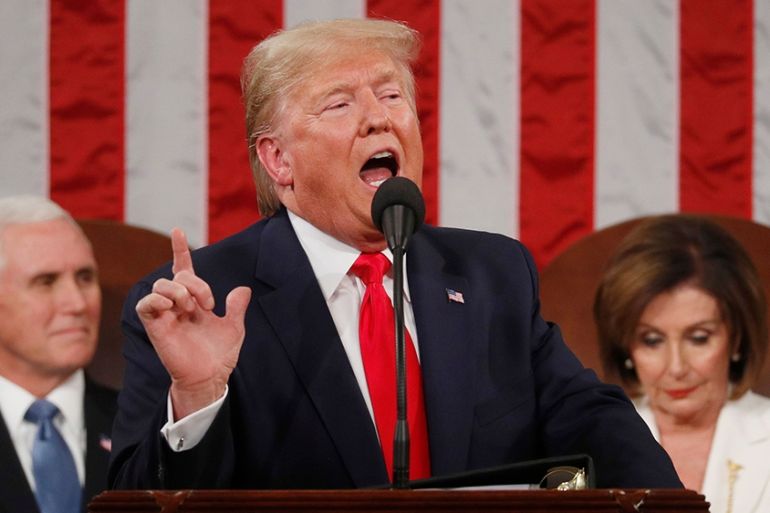The US jobs market is going gangbusters, which could help Trump
Strong job creation should help drive US economic growth that Trump is making a cornerstone of his re-election campaign.

The last thing an incumbent United States president seeking re-election needs is a slowing jobs market. On Friday, government figures showed President Donald Trump has little to worry about on that front – for now.
The US economy added a blockbuster 225,000 jobs in January, the US Bureau of Labor Statistics reported – far more than the 100,000 needed to absorb new entrants into the labour market and streaks ahead of analysts’ estimates.
Keep reading
list of 3 itemsUS Fed leaves rates unchanged; warns coronavirus could hurt US
Coronavirus fears eclipse strong earnings to hammer global stocks
The unemployment rate in January held comfortably near 50-year lows, edging up slightly to 3.6 percent. And Americans saw modestly fatter paychecks last month, with average hourly wages rising 3.1 percent from a year earlier.
The headline numbers signal that the jobs market will continue to be a source of strength for the US economy, which Trump is making a cornerstone of his re-election campaign.
On Tuesday, Trump lauded his stewardship of the economy during his annual State of the Union address, declaring, “in just three short years, we have shattered the mentality of American decline and we have rejected the downsizing of America’s destiny. We are moving forward at a pace that was unimaginable just a short time ago, and we are never going back!”
What Trump has characterised as an unprecedented economic boom is by most measures in line with the steady, modest growth trajectory he inherited from the previous administration of President Barack Obama.
The economy grew a respectable but unspectacular 2.3 percent in 2019, matching the average pace since the Great Recession ended a decade earlier.
But annual revisions released on Friday to past jobs numbers served up a mixed reality check on Trump’s economy boast.
Employment gains prior to March 2019 were revised downward by a whopping 514,000 jobs.
Capital Economics chief US economist Paul Ashworth described the revision as “a very big drop” but noted “that is ancient history at this point”.
More relevant in Ashworth’s view were the revisions to employment gains between April and December last year, which were revised up by 92,000 jobs.
“That means the rebound in employment growth late last year only looks stronger now. The six-month average gain was 206,000 in January, up from a low of 137,000 last July,” Ashworth wrote in a note to clients.
The January jobs numbers were helped along by mild weather as evidenced by the construction sector, which added 44,000 jobs. Healthcare, transportation and warehousing also showed healthy employment gains.
Manufacturing, though, continues to struggle, and shed 12,000 jobs in January.
And there are potential risks surfacing that could present some growth challenges to the economy. Boeing Corp – which accounts for a major component of US exports – halted production of its troubled 737 MAX aircraft last month.
The coronavirus is also injecting fear and uncertainty into economic forecasts as businesses, investors and governments try to gauge how deeply the outbreak could disrupt supply chains, production and demand.
On Friday, the US central bank, the Federal Reserve, said in its semi-annual report to US lawmakers that the recent emergence of the coronavirus “could lead to disruptions in China”, and that “significant distress in China could spill over to U.S. and global markets”.
